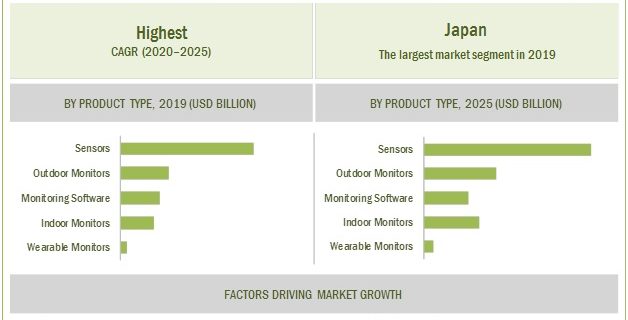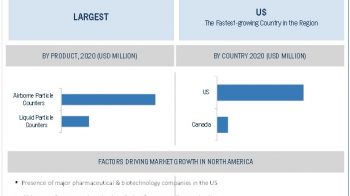
Market Estimation and Growth Drivers:
The environmental monitoring market is estimated to grow at a CAGR of 4.1% to reach USD 17.10 billion by 2025 from USD 14.0 billion in 2020. Rising pollution levels, a favorable regulatory scenario, the ongoing installation of environmental monitoring stations, the development of environment-friendly industries, increasing awareness, and the expansion of pollution monitoring infrastructure across emerging markets are the major growth drivers of the global environmental monitoring market.
Impact of COVID-19 on the Global Environmental Monitoring Market
The COVID-19 pandemic is expected to show substantial impacts on the environmental monitoring market—in the short term, market growth will be affected negatively. The overall pace of manufacturing has been badly hit due to the lockdowns imposed by governments across the globe. This has also disrupted the overall supply chain, while demand for environmental monitoring has declined among the end users as well. However, the growth rate is expected to regain its former pace by the end of 2020, in a post-pandemic scenario.
Environmental Monitoring Market Dynamics:
Driver: Rising levels of pollution
Rapid population growth and industrialization across the globe have increased the emissions of volatile chemicals, toxic gases, PM, and biological components, thereby raising air, water, soil, and noise pollution levels. The rise in carbon emission levels is more prominent across developing countries (such as China, India, Brazil, and Mexico) primarily because of their rapid industrialization as well as limited compliance to pollution monitoring & control regulations.
Download PDF Brochure: https://www.marketsandmarkets.com/pdfdownloadNew.asp?id=216846315
Additionally, human activities (such as vehicular emissions, wood burning, and the use of fertilizers) also contribute to pollution. In 2018, the global carbon emissions were estimated at ~37.1 billion tons, with China, the US, Europe, and India being the most significant contributors (in that order) (Source: University of East Anglia, Global Carbon Project 2017).
Challenge: Uncertain and inconsistent environmental regulations across emerging countries
While several developing countries have begun to implement environmental protection policies and initiatives, much work is still required in this area. This is evident from inconsistencies in regulations and standards in emerging countries with regard to the manufacturing, sales, and exports of pollution monitoring products. For instance, the environmental technology market in China was hampered due to inconsistent regulations and standards, a lack of proper guidelines, fragmented bureaucratic organization, and intense emphasis on economic growth, leading to misaligned incentives and regulatory competition across regions.
Recent Developments : Environmental Monitoring Market
- In July 2018, Agilent Technologies (US) collaborated with the Nanyang Technological University and Singapore’s Nanyang Environment and Water Research Institute (NEWRI) to develop an approach to testing and monitoring the US’s water supply.
- In December 2017, Thermo Fisher (US) acquired certain assets of EPTEK Technology (US) and several related offices in Taiwan and mainland China. The assets acquired include VOC continuous emission monitoring systems used to measure and analyze air quality across a range of industrial applications.
- In December 2016, Siemens Analytical Products and Solutions (the business segment of Siemens) partnered with a channel partner, Process Technology (US), which is involved in the manufacturing and distribution of process instrumentation and automation control products (including gas analyzers).
- In May 2015, Danaher Corporation (US) and Pall Corporation (US) signed a definitive agreement to acquire Pall Corporation (US) for USD 13.8 billion.
Geographic Growth Opportunities:
This report covers the environmental monitoring market across five major geographies—North America, Europe, the Asia Pacific, Latin America, and the Middle East & Africa. North America is expected to command the largest share of the environmental monitoring market, mainly due to an increase in government funding for the establishment of environmental monitoring stations and the stringent regulations in the region. Additionally, technological advancements in the field of environmental sensors and growing government initiatives in the area of pollution control have supported the market growth.
